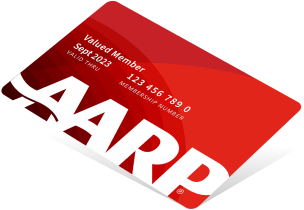AARP Hearing Center

According to the Centers for Disease Control and Prevention, around 15 percent of women and 10 percent of men in the United States regularly feel tired or exhausted. But there’s often a simple solution.
“Your energy level during the day could be related to many things, including sleep, fitness and food,” says Deirdre Conroy, clinical professor of psychiatry and clinical director of the Behavioral Sleep Medicine Program at the University of Michigan.
If your doctor has ruled out anything serious for your energy slumps, such as a health condition or a medication side effect that could be making you tired, give these eight proven energy boosters a try:
1. Snack right
Instead of reaching for a candy bar or latte to fend off fatigue, try a balanced snack. “Food is energy for the body, and the right foods can give you steady, ‘time-released’ energy,” says Dawn Jackson Blatner, a nutritionist in Chicago and author of The Superfood Swap.
The best snack, Blatner says, is a combo: a piece of fruit or carrot sticks (or other produce) plus protein, such as a handful of nuts, Greek yogurt, string cheese, cottage cheese, hard-boiled egg or roasted edamame. The body uses fruits and vegetables for immediate energy, while the protein provides longer-lasting, steady energy to keep you invigorated until your next meal.
Can coffee be a good pick-me-up? Blatner recommends a cup of matcha green tea instead — it has a third of the caffeine, reducing the jitters.
2. Drink plenty of water
Dehydration is one surprising reason you may be lacking pep. It slows circulation and makes your heart work harder to pump oxygen to the brain and the rest of the body, causing sluggishness and a lack of focus.
The average woman should consume approximately 2.7 liters (11.4 cups) of water (that includes in beverages and food) every day to stay hydrated, according to the Institute of Medicine and National Academies of Sciences, Engineering and Medicine. Men should get about 3.7 liters (15.6 cups).
“For extra hydration, consider adding an electrolyte tab to your water since water with electrolytes can help hydrate cells faster than plain water alone,” says Blatner. Milk, juice, herbal teas, and decaffeinated coffee and tea can also help raise your water quotient.
3. Get moving
There’s clear evidence that exercise can make you more energetic — and you don’t have to go all out to get the benefit. University of Georgia researchers found that sedentary people who complained of fatigue were able to increase their energy levels by 20 percent and decrease their fatigue by 65 percent by engaging in regular, low-intensity exercise like aerobic workouts. Cycling and resistance training also do the trick. Check out our Staying Fit page for a series of 10-minute workouts.
Study author Patrick J. O’Connor, a professor of kinesiology at Georgia, attributes the energy boost to “exercise-induced changes in activity in brain neurons and circuits that underlie feelings of energy and fatigue.” It’s likely that neurotransmitters like norepinephrine, dopamine and histamine are part of the process, he adds.
Need a quick power surge? A 15-minute walk can make a difference, whether you’re hoofing it on the trail or on a treadmill, according to research from Northern Kentucky University.




























































More on Health
8 Things to Do at 50+ to Help You Live Longer
It’s never too late to make small changes to improve your health
What Is the MIND Diet?
The eating plan can give your brain a boost
7 Ways Working Out is Great for Mental Health
Exercise boosts mood, reduces depression and eases anxiety